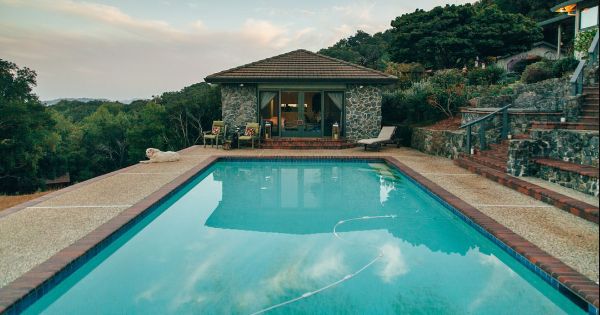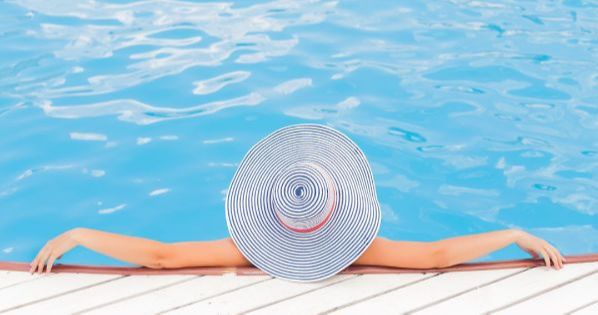Red eyes, dry skin, and green hair: these are just a few problems chlorine causes.
Chemical chlorine is still the number one method of dealing with sanitizing swimming pools everywhere. However, chlorine is also known for its propensity to cause allergic reactions, eye irritation, and its sharp smell. Luckily, there are many replacements that you can use instead of chlorine that will keep your pool clean and your eyes happy. Here are some of the top alternatives to consider when you want to reduce chlorine use in your pool.
1. Bromine
Another member of the halogen family, bromine can do many of the same things that chlorine can. It can disinfect water, oxidize your pool, and stop algae growth. However, it doesn’t do any of those things quite as well as chlorine.
A pool treated with bromine alone turns green and foams when agitated because it doesn’t oxidize as well as chlorine does. Often, pool owners will have to mix about two parts bromine with one part chlorine to get the desired result.
Bromine is considered better for you though. It’s easier on mucus membranes and doesn’t cause allergic reactions so it might be beneficial for those who have allergies to chlorine. Bromine is also more expensive than chlorine so while it may be an effective solution, it may not be the best for folks on a budget.
2. Ozone
You probably recognize ozone from the layer of atmosphere that protects us from radiation from the sun. Well, ozone can do more than that. You can use an ozone pump paired with a sanitizing agent to clean your pool.
Ozone generators are a great way to not only oxidize the water but also soften it and balance the PH for a nicer swimming experience. While an ozone sanitation system can reduce the use of chlorine by up to 90%, you may choose to still use a small amount of chlorine to help sanitize the pool.
The caveat of using an Ozone generator is that they can be expensive. A small pool ozone generator starts at around $600 on average. They also run best in dry air so if you live in a wetter climate, they have problems with performance. Ozone might be effective, it’s the price that is its biggest drawback.

3. Salt
In the chemical known as NaCl, the NA is the extremely reactive metal sodium. The other part of the equation is Cl, better known as chlorine. When they're put together, they form table salt. The amazing flavorant and preservative is used to make food taste good while making ocean water taste awful. Many people don't know that you can use salt to naturally and effectively clean your pool.
The salt breaks down in the water naturally releasing chlorine, keeping the pool clean and sanitized. It doesn’t irritate skin or eyes, nor is it associated with allergic reactions. You can even open your eyes underwater without negative side effects.
Salt sanitation also happens to be inexpensive. After all, you can't simply pour table salt into your pool every once in a while. You will still need to filter the water and perform other necessary pool maintenance with the appropriate chemicals. However, you won’t need to replace the salt for up to five years after buying a salt sanitation system. Salt is probably the best and easiest way to cut back on chlorine use for your pool.
There are a lot of ways to cut back on chlorine, whether you want to have a more pleasant swimming experience or you have an allergy. Swimming is a great pastime for young and old alike, so make it the best and toss out your chlorine today.

